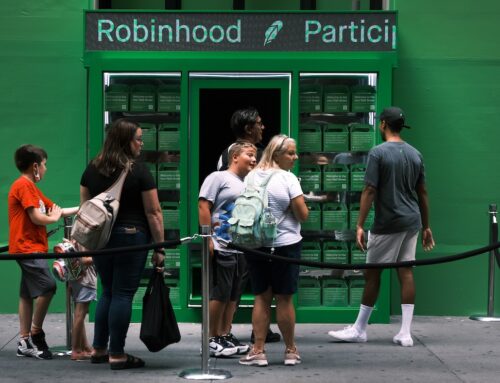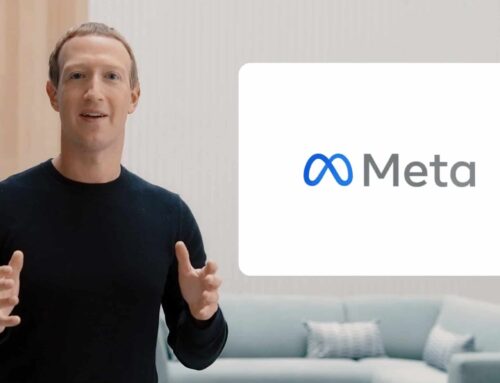Powering the Future: Why Michigan’s Data Center Debate is Critical for Clean Energy and Yo
July 7, 2025
Over the past few months, you’ve likely noticed a wave of services claiming to use ‘artificial intelligence’: Google’s AI Overview, Facebook’s Meta AI, or ChatGPT. These products are powered by large language models (LLMs), which are essentially very advanced autocomplete tools trained on massive data sets.
Using these artificial intelligence tools requires massive amounts of energy. A recent report from the Lawrence Berkeley National Laboratory found that data centers used about 4% of total US electricity consumption in 2023, and that total is expected to grow as high as 12% within the next three years. This would be more than 500 terawatt-hours (TWh), nearly as much electricity as the entire nation of Germany consumed in 2023.
The scale of individual data centers is also staggering. Amazon is currently building a data center in Indiana that will use as much energy as half the residents in the state. These facilities can also use energy in unpredictable ways, with power demand swinging by up to 20 megawatts (MW) in a fraction of a second, the equivalent of several thousand homes connecting or disconnecting simultaneously from the grid.
All of these factors—the quantity, size, and behavior of data centers—present a tremendous challenge to the grid. Will there be enough energy to supply data centers? Who will pay for the generation and other infrastructure needed to supply this energy? Will the need for new generation stall progress on clean energy goals? All of these issues could affect your electricity bill, your health, and the future of our climate.
Stakeholders including utilities, regulators, governments, and communities are grappling with these questions in forums across the world, and UCS is currently closely involved in one such conversation playing out in Michigan.
In February, Michigan’s largest electric utility, Consumers Energy, submitted an application to state regulators seeking approval for a proposed set of terms and conditions specific to new data centers. Recognizing their unique characteristics, Consumers Energy proposed to implement four key measures to manage the risks:
- Protecting other customers from the risk of reduced reliability by requiring data centers to operate in ways that support a more reliable grid.
- Mitigating the risk of increased costs to other customers by implementing minimum contract terms and financial obligations for data centers.
- Requiring data centers to cover the costs of investments in the grid needed to serve them.
- Charging an upfront administrative fee when data centers apply for interconnection to reduce speculative applications, ensuring that the utility’s costs are covered and that load growth can be more accurately forecast.
In March, UCS and our Michigan coalition partners filed a petition for a contested case, as we believe this important issue deserves detailed scrutiny. The Michigan Public Service Commission (MPSC) agreed, ordering a contested case proceeding.
While UCS and our partners are generally supportive of the types of terms Consumers Energy sought in its application, we believe more is needed. A key solution that we and other intervenors wanted to explore was requiring data centers to bring their own clean energy, which addresses both the utility’s existing concerns and the risk of missing renewable and clean energy targets. This solution was a key recommendation of testimony filed by Saad Siddique, an economist and analyst with our partner, the Environmental Law and Policy Center (ELPC). UCS agrees with all of Siddique’s testimony.
Siddique opened by explaining Michigan’s climate law passed in 2023. The law mandates increasing shares of clean and renewable energy, reaching 60% renewable energy by 2035 and 100% low-carbon energy by 2040 (the 100% standard includes renewables along with nuclear and fossil gas power plants that capture and store at least 90% of their carbon emissions).
To ensure compliance with the climate law, utilities must file renewable energy plans (REPs) every two years. Consumers Energy’s latest plan was filed late last year and indicated that the utility is on track to meet its renewable energy obligations for forecast load through 2032, including just over one gigawatt (GW) of data center demand.
However, Siddique pointed out that in Consumers Energy’s filing for the proposed data center requirements it projects anywhere from 3 GW to 15 GW of new data center load, with the lower end of this range considered “probable” by 2035, and the higher end being nearly double the utility’s peak demand today.
Siddique’s testimony explained how both the amount and speed of this growth challenges the utility’s ability to fulfill its clean energy obligations, and that without proactive planning the utility will constantly be playing catch-up. A “business as usual” approach with an REP every two years and no long-term plan for dealing with data centers puts the utility at risk of missing the targets and dramatically increasing costs for all of the utility’s customers.
This conclusion is based on several important facts: new generation takes time to build, large new loads require upgrades to the grid, and rushing the implementation of either one is expensive.
First, factoring in the 3 GW of “probable” new data center load, Siddique calculated that Consumers Energy would need an additional 5 to 6 GW of renewable energy capacity (depending on the mix of wind and solar) by 2035 to meet its obligations, compared to only 2 GW of renewable capacity online as of 2025.
Second, he explains that there is currently a 3 to 4 year backlog of new generators seeking to come online in the MISO grid (which includes Michigan). In addition to this waiting time, Consumers Energy’s own modeling shows a limit of how much new wind and solar can come online in their territory per year in the near term. Renewables procurement is subject to constraints related to insufficient grid infrastructure, securing suitable sites, workforce limitations, and other factors. All of these factors mean that building the 5 to 6 GW of renewables that data center load would require will take time.
Finally, Siddique explains how there are also challenges on the load side. Connecting large new loads typically requires major upgrades to the grid, such as new cables, transformers, and even substations. Building all of that infrastructure takes time, and costs for equipment are rising. Without careful planning and accounting, many of those costs would be passed on to other customers, besides the new data centers. While Consumers Energy’s filing identified some of these risks, the utility did not look at the full suite of solutions, such as local clean energy co-located with data centers, demand management, or cost allocation strategies that would protect other customers from those higher costs.
Considering the risks and challenges of meeting the clean energy requirements and managing costs, what should the utility do?
As recommended in Siddique’s testimony, Consumers Energy should work with new data centers to require, incentivize, or prioritize solutions that provide clean energy and reduce system costs. The utility can do this by:
Requiring data centers to disclose clean energy plans. First, when applying for interconnection, data centers should be required to provide information about any clean energy they will provide locally, as well as plans for on-site energy storage and demand management. A recent analysis from Wood Mackenzie found that this approach is the most effective method for protecting other customers from the costs of supplying power to data centers, and several utility executives have voiced support for this approach. Such a requirement would also align with climate action commitments that many tech companies have already made.
Prioritizing data centers with the most robust clean energy plans. Consumers would then take these clean energy plans into account when studying system impacts and prioritize applications from data centers who would have the least impact on system costs and the most benefit for complying with clean energy requirements. Prioritizing these applications would incentivize potential customers to develop more robust plans for being better grid citizens.
Siddique also recommended that Consumers create clear pathways for data centers to participate in the company’s existing voluntary green pricing program, where customers opt-in to rates which directly fund renewable energy projects. While this will not affect clean energy compliance directly, it will ease the burden on the company’s obligations and support Michigan’s overall clean energy goals.
Keeping data centers accountable for their commitments. Finally, Siddique encourages clear reporting guidelines that would enable the utility (and the MPSC) to ensure that data centers are fulfilling their obligations around renewables, storage, and demand management.
The next step in this case will be rebuttal testimony, where Siddique and the other witnesses can respond to each other’s testimony. This will be followed by a hearing, and then briefs and replies, where each party lays out their legal arguments backed by witness testimony. A final order in the case is expected by the end of the year.
This case will set an important precedent for how data centers are connected to the grid; DTE, the other major utility in Michigan, will likely file for its own data center requirements in the near future, and other utilities in the Midwest are watching or taking their own steps (see We Energies in Wisconsin, for example). Many of the intervenors in this case represent national interests and will be evaluating what works and what doesn’t as they consider regulation and legislation in other states.
We agree with Siddique: The Michigan Public Service Commission should adopt proactive, comprehensive measures to ensure that data center growth supports, rather than undermines, Michigan’s clean energy transition and protects existing ratepayers from undue financial burden. Such a decision could create a strong template for regulators across the country to follow as they weigh the balance of AI-driven innovation against clean energy goals and energy affordability.
Search
RECENT PRESS RELEASES
Related Post




